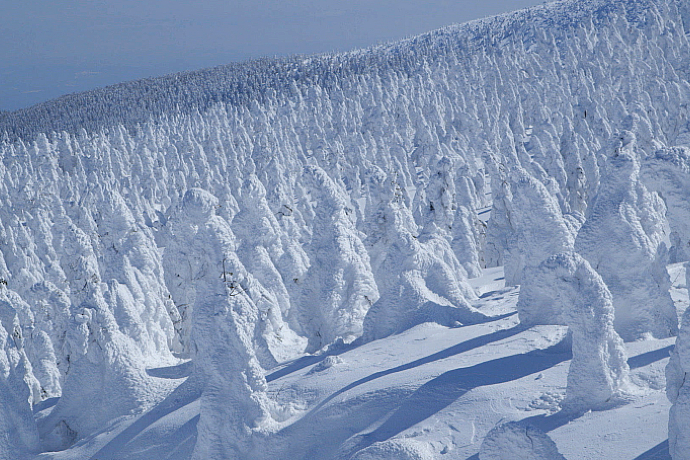Category : Trending | Sub Category : International Posted on 2023-12-19 08:59:52

Is Winter a Good Time to Visit Japan?
Most people are drawn
to Japan’s peak seasons, spring and fall, so we’re always thrilled when a new
client asks us, ”Is Japan worth visiting in winter?”
The answer is a
resounding yes!
If you can handle a bit
of cold weather, and love exploring with fewer tourists around, winter is a
great time to visit Japan. As you can read in more detail below, winter in
Japan offers amazing sushi and sashimi, heartwarming comfort foods and cozy izakayas,
soothing hot springs and gorgeous snow-covered landscapes, and fewer crowds
throughout the country.
Weather in Japan in
Winter
How cold is Japan in
winter? Well, let’s be honest. The weather in most parts of Japan in winter is
cold – this much is true. But if you enjoy the art of coziness, you will love
the feel of winter here.
When are the Winter
Months in Japan?
Winter in Japan
generally lasts from early to mid-December until the middle of March, but the
duration and intensity vary by geography.
In most parts of
central Japan (including Tokyo, Kyoto, and Osaka), winter temperatures range
from about 25 to 45 °F (-4 to 7 °C).
In mountainous and
northern parts of Japan (such as Tohoku and Hokkaido, and the Japan Alps) it
can get much colder. These areas experience a longer and more intense winter
and are also blessed with abundant snowfall.
In southern and western
parts of Japan (such as Kyushu, Shikoku, and Okinawa) it can still get cold,
but on the whole, winter tends to be a bit milder.
Japan in December
In early December, it’s
already winter in Hokkaido, but in places like Tokyo and Kyoto, it may still
feel like late autumn. It’s common to have crisp, chilly weather and blue skies
(hence the term akibare, referring to the clear sunny skies common in fall),
and not uncommon to have views of Mount Fuji from Tokyo skyscraper hotels (such
as Aman Tokyo and Park Hyatt Tokyo, among many others).
By late December, it’s
fair to say it feels like winter throughout Japan, though as usual the parts of
the country furthest south and west (such as Kyushu, and especially Okinawa)
remain milder.
Japan in January
As the crowds begin to
thin following the New Year holidays, and mid-winter begins to set in, expect
cold weather most everywhere you go. Even though the ski season starts before
January, in most ski areas like the Alps, Tohoku, and Hokkaido, your
probability of getting great conditions starts to increase once January rolls
around.
For the most part,
there are also very few tourists in January, other than at ski resorts. Most
travelers use all their vacation time over the holidays, so if you can visit
Japan in January you may have popular places like Kyoto mostly to yourself.
Japan in February
By February, most
people in Japan are starting to get excited about spring (which usually begins
to make itself felt by mid-March), and February can feel cold and dreary for
residents. But for tourists, it’s another excellent time to visit, if you don’t
mind the cold.
For travelers who enjoy
spectacle, consider planning in advance to attend the remarkable Sapporo Snow
Festival (Yuki Matsuri). Held annually in February, Hokkaido’s Yuki Matsuri is
one of the world’s great winter celebrations and features awe-inspiring ice
sculptures, local cuisine, snow slides, snowball fights, ice bars, and more.
Just keep in mind that
any holiday period tends to mean big crowds, and the Chinese New Year period
(which often occurs in early February) is also a very busy time of year, with
visitors flocking to Japan from throughout Asia.
Technically, winter
lasts into March, though by the middle of March the cherry blossom season
starts getting into full swing.
Experiences That Make
Winter a Unique Time to Explore Japan
It can be hard for
travelers to resist the pull of sakura (cherry blossoms) or fall foliage, but
we think even people who normally dislike cold weather should consider visiting
Japan in winter.
To help you decide when
to travel to Japan, and whether this less crowded time of year is for you,
let’s dive into what makes Japan such an appealing winter destination!
1. Fresh Sushi and
Seafood
Eating local and
seasonal food is nothing new in Japan, where people think little of traveling
across the country to sample a local specialty in season. But while food is
always a great reason to travel to Japan, winter is in some ways the best time
of year for culinary travelers.
You’ll find
extraordinary seasonal specialties at top sushi shops in Tokyo, and other sushi
meccas such as Kanazawa, Toyama, Fukuoka, and Hokkaido. Hiroshima and Tohoku
are just two of many destinations for oysters, where you can savor the bounty
of winter paired with local nihonshu (sake).
Japanese Wintertime
Comfort Foods
Along with seafood,
Japan is also outstanding when it comes to comfort foods. If you’re in Sapporo,
on the northern island of Hokkaido, make sure to sample the heartwarming
specialties of soup curry and miso ramen.
Winter also marks the
appearance nationwide of two wintertime favorites: oden and nabe.
Oden can be found
everywhere from oden-specialty restaurants to izakayas (see below) and even
convenience stores. Large simmering pots of dashi-based broth slow cook
ingredients such as daikon, boiled eggs, tofu, and more.
Nabe are stews (often
translated as “hotpot”) composed of any of a wide range of ingredients, from
vegetables to meat and seafood. Nabe is traditionally shared with friends or
family, and there’s nothing more convivial than gathering around the table to
enjoy one, especially in winter!
Cozy Bars, Izakayas,
and Cafes
Speaking of
conviviality, few things are more comforting than warming up at a local izakaya
over small tapas-style plates and sake (see our full post on izakayas in
Japan).
An izakaya is typically
a neighborhood establishment where locals go both for the food and the drink
(it’s often translated as “Japanese-style tavern”). Izakayas have eclectic
menus featuring anything from tofu, tsukemono (Japanese pickles), and grilled
vegetables, to sashimi, yakitori, and karaage (fried chicken).
Eating and drinking at
an izakaya is a great way to mingle with locals, and particularly comforting
during winter.
Luxury Ryokans and
Onsen
Without onsen (hot
springs), winter in Japan would be beautiful, but perhaps not transcendent.
Many countries around the world have pristine hot springs, but in Japan, the
art of the onsen experience has been perfected to an extraordinary degree.
Visiting a ryokan
(Japanese-style inn) with onsen, particularly in winter, is a quintessential
Japanese experience and not to be missed (see more wonderful things to do in
Japan).
When staying at a
ryokan with hot springs, you pass the time by soaking in healing mineral
waters, contemplating nature, drinking green tea in your tatami-lined room,
napping, and partaking in incredible, memorable meals. Yes, food is also an
integral part of the onsen experience. A ryokan stay typically includes dinner
and breakfast, both of which normally feature a beautiful array of local and
seasonal specialties.
The exceptional
combination of nature, culture, food, and omotenashi (Japanese hospitality)
result in an experience that is both incredibly relaxing and culturally
fascinating.
Powder Paradise:
Japan’s Legendary Skiing and Snowboarding
If you love outdoor
sports, what could be better than skiing or snowboarding all day, then enjoying
a delicious hot meal of local Japanese cuisine and a soak in the onsen?
Japan is blessed with
abundant snowfall throughout its many mountainous regions, and you can find
winter resorts around the country, particularly in Hokkaido, Tohoku, and the
Japan Alps.
In Hokkaido, snowfall
is so plentiful that skiers and snowboarders consider it to have some of the
best-quality powder in the world. Niseko is by far Hokkaido’s best-known ski
destination and is home to luxury accommodations and a thriving culinary scene.
A small handful of Hokkaido’s other notable ski areas include Rusutsu, Furano,
and Tomamu.
Tohoku and the Japan
Alps are both slightly easier to get to (both are fairly convenient to reach by
train, whereas the easiest way to get to Hokkaido for most people is by
domestic flight), and can be great alternatives if you’re not attached to the
idea of skiing in Hokkaido.
The 1998 Winter
Olympics were held in Nagano, in the Japan Alps, and the region’s many ski
resorts include Hakuba, Shiga Kogen, and Nozawa Onsen. In the Alps, you’re also
within easy reach of the famous snow monkeys (see below). As for Tohoku, it’s
one of Japan’s most off-the-beaten-path regions, and in addition to its many
ski areas features pristine nature, history, and some of Japan’s best onsen.
While it varies a bit
depending on the area, the ski season generally lasts from December to April,
though expect the best conditions around January and February (naturally, it
can vary a lot from year to year). And for the non-skiers traveling with the
powderhounds, enjoy gorgeous snow-covered landscapes, onsen and spa treatments,
and warm nihonshu!
Japan’s Snow Monkeys
Love Winter
Humans are not the only
ones enjoying onsen. Especially in winter, the Japanese macaques of the famous
Snow Monkey Park soak in the remote onsen of Jigokudani.
Located in the
mountains of Nagano Prefecture in the Japanese Alps, the Snow Monkey Park
(Jigokudani Yaen Koen) is especially popular among family travelers, photographers,
and of course animal lovers.
The Snow Monkey Park is
open throughout the year, but it’s best experienced in the dead of winter, when
the landscape is covered in deep snow and the local macaques have good reason
to spend time savoring hot springs.
New Year’s Celebrations
in Japan
While many restaurants
and other establishments close for several days around the New Year’s period,
which holds great significance in Japanese culture, it can also be a very
special time to be in Japan.
Sure, you’ll find
countless New Year’s Eve parties at bars, clubs, and restaurants in cities such
as Tokyo and Osaka, which have some of the best nightlife on Earth. But while
we love a good party, perhaps the real magic of New Year’s in Japan is found in
its more old-fashioned side.
This is especially
apparent in historic cities like Kyoto and Kanazawa, where locals flock to
traditional districts and Buddhist temple bells ring out at midnight, creating
an unforgettable, timeless atmosphere. On New Year’s Day, many Japanese people
visit Shinto shrines, such as Meiji Jingu Shrine in Tokyo.
Enjoy Fewer Crowds in
Winter
If you’re the type of
traveler who loves getting off the beaten path, and avoiding touristy times of
year, winter may be the ideal time for you to visit Japan.
Apart from the winter
holidays, winter is generally a low season. However, keep in mind that this
doesn’t quite apply to ski resorts, which tend to be at their most popular
throughout the winter.
Ski areas
notwithstanding, when speaking with clients who have flexible travel schedules
we often ask: would you rather have warmer weather, or fewer tourists around?
If you can tolerate a bit of cold, and enjoy feeling like you have a
destination almost to yourself, consider bundling up for the chilly weather and
travel to Japan in winter!
When to Begin Planning
Your Winter Trip to Japan
We hope our
introduction to the joys of winter in Japan helps you as you plan your
adventure!
Depending on your dates
and trip priorities, we recommend planning about 6-12 months in advance to
ensure you can get your first choice accommodations and experiences.
You can see our
real-time availability here, and if you’re curious to learn more about how we
design each custom trip, check out our trip-planning process.
Even if you don’t love
cold weather, it’s hard to resist the magic of winter in Japan, the coziest
time of year (with delightfully few tourists).
Japan is well known for
the beauty of its seasons. The cherry blossoms in spring. Vibrant fall foliage.
Even the lively festivals (matsuri) of summer.
Yet winter is often
overlooked, despite offering some of Japan’s most sublime experiences — and
fewer tourists. (See our full article on the seasons and when to visit Japan).
Because we love winter
in Japan both for its unique experiences and its relative lack of crowds, we’ve
compiled a few of our favorite things about this underrated season. Get
yourself cozy and read on!
Is Winter a Good Time
to Visit Japan?
Weather in Japan in
Winter
Experiences That Make
Winter a Unique Time to Explore Japan
Winter in Japan lasts
from December to February, when snow adds an extra beauty to everything from
ancient temples and shrines to the towering mountain ranges. Winter sports
enthusiasts come from around the world for the famous powder snow. Families
stay warm eating traditional winter foods like oden stew and nabe hot pot as
they snuggle around the kotatsu heated table. This is the season for
illuminations, with large scale events brightening the night around the
country, and many local New Year festivals to pray for good harvests and
health. As the cold season draws to a close, yellow wintersweet flowers herald
the coming of spring.
Japan is well-admired
for its four distinct seasons. From the cherry blossoms of spring and the lush
greenery of summer, to the vibrant autumn foliage and the snowy winter
landscapes, you can truly experience the beauty of nature all year round.
Japan also offers an
endless variety of experiences that vary with the seasons, including festivals
and gourmet delights. In different regions, you will enjoy different seasonal
offerings, even within the same month – making Japan an ideal destination
throughout the year. Begin your memorable journey to Japan when you embark with
ANA today.



